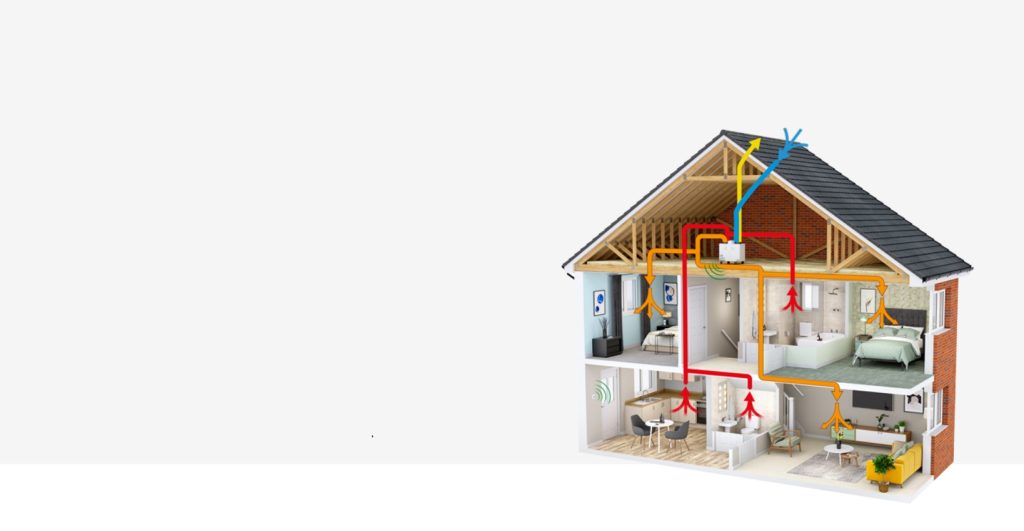Temperature check
Low surface temperature (LST) radiators are specifically engineered to deliver safe, efficient and dependable heating for vulnerable people in a range of commercial and domestic settings. With stringent safety regulations in place, such as the NHS Safe Surface Temperature guidelines (which state that the surface temperature of radiators in NHS buildings should not exceed 43°C), it’s no surprise there is particular demand for them in healthcare applications. For this reason, it’s crucial that specifiers working with hospitals, clinics and other healthcare buildings understand the ins and outs of LST technology – including how it works and how to choose the right products for the best results.
Striking a balance
In a traditional hot water system (i.e. one with an incoming flow temperature of 90°C and a return of 70°C), radiator surface temperatures can climb as high as 80°. When skin makes contact with a surface this hot, it can burn. LST radiators have been developed to avoid serious injuries like this and also comply with NHS maximum safe-touch temperature guidelines by using a special protective casing. For instance, Quinn Radiators’ LST casing is made from ventilated steel, with no visible welds or sharp edges, which ensures a safe maximum touch temperature of 43°C (based on a Delta TΔ value of 50°C (75/65/20)).
A greatly reduced surface temperature obviously makes for a much safer product for end users, but given that a radiator’s primary function is to keep a building and its occupants warm and comfortable, it’s important that heat outputs aren’t compromised in the process. The good news is that the most effective LSTs are built to allow sufficient ventilation (and minimal heat loss) through their casing, so a lower surface temperature doesn’t have to mean reduced performance. Most modern units incorporate carefully placed ventilation grilles, which draw in cold air from the bottom of the casing, creating a ‘chimney’ effect and enhancing heat transfer through the grilles at the top by convection. Meanwhile, the special LST casing simultaneously suppresses radiant heat transfer to ensure surface temperatures stay within safe-touch guidelines.
Tamper-proofing
A LST’s grilles should be wide enough to allow air to circulate, but narrower than finger width, especially in environments where children have access to radiators, like children’s wards and GP surgeries. These are sometimes known as ‘pencil-proof’ grilles, and stop foreign objects from falling or being pushed through into the casing. Another safety consideration that may be relevant for certain applications is whether the product meets anti-ligature requirements. If in doubt, ask your manufacturer whether your chosen LST complies.
From an operational perspective, it is also vital that users can easily control the temperature of each LST unit without opening the cover and exposing the emitter underneath. As such, it’s advisable to choose a system with an external TRV (thermostatic radiator valve), which can be connected directly to the emitter via a made-to-measure cut-out in the casing. Alternatively, for added tamper-proof security, the LST can be fitted with a remote sensor head outside the casing, which is then connected by capillary to the valve inside. Some models even feature a lockable casing that incorporates a hinge mechanism – providing sufficient protection for end users, while also allowing hassle-free access for maintenance, repairs or cleaning.
Looking ahead
New-build developments have traditionally formed the majority of the LST healthcare market and, as the January 2016 BIM (Building Information Modelling) deadline approaches, it is becoming increasingly straightforward to size new LST systems in line with the exact requirements of individual projects. However, some manufacturers now also offer fully compliant LST casings that can either be installed together in a package with their own new heat emitter, or mounted onto a suitable existing rad as a separate component (these could also be specified as a replacement for an outdated or damaged LST). This means that, today, modern LSTs are as suitable for retrofit projects as they are for new builds – another significant factor driving demand in the healthcare sector.
With LST technology constantly evolving and growing in popularity, it’s clear that specifiers should familiarise themselves with the products available and the full breadth of safety-enhancing benefits they offer. Those who are properly equipped with the right knowledge and technical expertise will be best placed to advise on the right heating solutions to suit the needs of different healthcare buildings – and set the standard for the whole sector in the process.



















